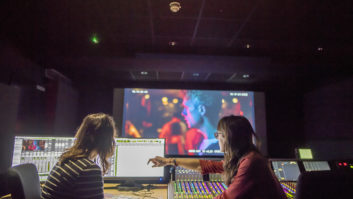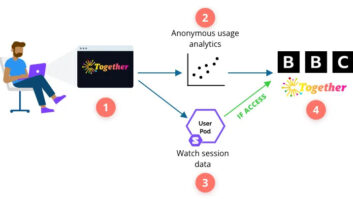
By Michael Barroco, EBU
The current broadcasting landscape is a jungle of new players. Companies like Netflix – who are able to provide content in new ways direct to the consumer – have raised the expectations of audiences in terms of mobility and availability of content.
What make new online players killer applications?
As you probably know, Netflix and Spotify are able to deliver a very simple user experience. Because these companies have control of the whole distribution chain and every device is connected, the user is individually recognised through the system. This generates a lot of identified data that they can then use to learn about their users tastes and habits.
User profiles allow personalised services and tailored recommendations. Leveraging this precious database, they can transform observable metrics into actionable options. For instance, they can use what is called A/B Testing to evaluate new features. This consists of proposing different interfaces to multiple sets of users. According to the reaction of the users, they can decide which feature is better for each subset of their audience.
This is not easy for broadcasters since they have to comply with standards in order to reach their audiences and there are many players involved in the entire distribution chain. Time for broadcasters to rise up!
Over the past few years, EBU Technology & Innovation has collaborated with industry and broadcasters to develop ways to enable broadcasters to catch up with online technologies in terms of personalisation and leveraging big data opportunities. Our team is building a community around the field of personalisation to allow broadcasters to provide the best user-centric experience while taking advantage of exclusive and live content.
Until recently, it was very difficult to build a unified user experience across media devices and online devices. However, by using standards and collaborating with members and industry, we are now ready to compete with new online players using standards.
Key standards to watch: EBU Tech 3366: The Cross-Platform Authentication Protocol. EBU-CPA is a broadcasting-flavoured OAuth2.0 protocol, which enables personalisation. It creates a link between a user profile and devices. Using this link, it is possible to create any kind of interaction between devices and people, assuming that the broadcaster provides a concept of a community.
Imagine you are watching a live show on your TV and have to run to catch the bus. You jump into the bus and start the broadcaster application on your tablet. Using the link between the devices and your user profile, the broadcaster will offer you to start watching the show at the exact moment you switched off your TV.
This specification is in the process of being standardised at ETSI. EBU-CPA covers the full range of devices: limited input devices such as radios, connected TVs (HbbTV), and native mobile applications. For more information, see: https://tech.ebu.ch/cpa
• HbbTV 2.0 Specification: IP-connected devices are offering a set of frameworks to build custom applications on media devices (TV and radio). A major update on the previous HbbTV Specification, Version 2.0 adds new features to make existing services more attractive to the end-user or the service provider, enables new services such as push VoD, updates technologies and improves inter-operability between services and terminals. For more information, see: https://www.hbbtv.org/
pages/about_hbbtv/specification-2.php
• EBU RecSys Project: We are currently investigating how to specify interfaces between content recommendation providers and broadcasters infrastructure. More information: https://tech.ebu.ch/recsys
Architecture of a user-centric broadcaster
Building such a user-centric experience is technically complex because these new architectures are not easy to understand for architects who are used to build vertical and isolated systems. This will require a change in the culture and the skillset of engineers.
There are many challenges associated with distributed and connected systems in terms of scalability, security and customisation. It is important for broadcasters to take into account three main elements when building a reliable modular and distributed User Management System:
1. The Identity Management takes care of identifying the user using his/her credentials. It is responsible for managing the profile and providing an interface to access it from other trusted systems.
2. In the context of connected applications, it is important to take into account the notion of a single sign-on. Indeed, a distributed system implies that different servers provide the features offered to the user, often using a single application. Therefore, it is essential that a user be granted access to the system without having to enter his credentials for every service.
3. Since broadcasters want to provide personalised services on limited input devices, it is also necessary to consider that the audience does not want to enter an email and password on a radio or a TV using a remote control every time they access the system. The device manager manages the association of devices with an online identity and should offer the possibility of revoking devices in case it is stolen or lost.
Based on our experience, a fully user-centric infrastructure requires open interfaces (APIs) in order to integrate other systems while keeping the full system scalable and secure. Therefore, OAuth2.0-like and EBU-CPA interfaces are key to deliver personalised broadcasting services.
If you want to learn more about designing and building your own broadcasting architecture to deliver personalised services, stop by our EBU stand 10.F20 during IBC or join us at the next EBU DevCon Conference in Geneva (6-7 October 2015).







